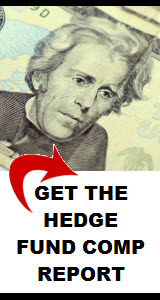One of the big hedge fund job stories 2011 had to be the exodus of traders from the proprietary trading desks of the big banks, either to take jobs at hedge funds or start their own firms.
New regulations forced banks to take fewer risks with shareholder money, and that, along with the banks deferring more compensation in the form of stock rather than big cash payouts, made them a far less attractive environment for top traders.
The exodus began with equity and bond traders and continued with traders in energy, metals, and other commodities. By the end of the year, several high-profile traders had attracted from $500 million to a billion in new capital to launch new funds.
Then there was the story of Asia’s increasing prominence for the hedge fund industry. Bloomberg reported that assets managed by Asian hedge funds may exceed $180 billion in the next 12 to 18 months. The region’s faster-pace growth is attracting more investors, particularly as debt issues plague both U.S. and European economies.
“The Asian hedge funds industry continues to be one of the most exciting and fast-moving sectors of the global hedge fund industry,” according to a Eurekahedge report. “The region continues to develop at a fast pace with new funds starting up and employing an increasing number of different strategies and geographical mandates.”
Are the quants with their black box trading taking over the hedge fund industry? The Atlantic offered an outstanding article on the rise of the quants and how their machines are changing the face of hedge fund trading. The article profiled Cliff Asness, founder of Applied Quantitative Research in Greenwich, CT, one of the world’s leading quant-fund managers.
And back in July, 8,000 people applied for a chance to get on the fast track to a hedge fund job and become a new “turtle” trader, working with hedge fund veteran Mike Baghdady.
The program was modeled after an experiment by Chicago trader Richard Dennis, 30 years ago. Dennis reportedly visited a turtle farm in Singapore and was inspired to “breed” an elite group of traders. It was also a bit of a bet to see if traders were born with the personality for the job, or could learn it. Baghdady offered to teach his unique Price Behavior system to new traders. And each of the final 20 applicants was to receive $100,000 in their account to begin their trading careers.
What do you think were the most important stories of 2011 that affected hedge fund jobs? Add you comments below.






Comments on this entry are closed.